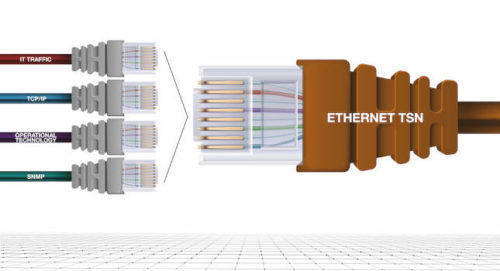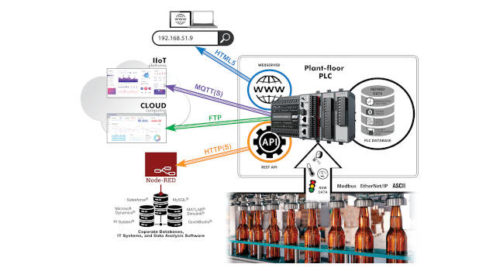Mobility
Mobility broadly refers to non-stationary hardware, software and wireless networking technologies designed to enable remote monitoring, control, access or training for industrial applications. Mobile engineering applications for smartphones and tablets (mobile devices) are collections of usable algorithms or code, usually sold for a fee, but sometimes free, that are used in portable computing devices to help in the use of scientific principles to design, build, integrate, monitor, modify and/or operate machines, structures, processes, devices, products and/or systems.
Mobility Articles
Enterprise data mobility is a necessity
Enterprise data mobility, circulation and protection is not only achievable, but also a necessity for today’s businesses.
Research firm IDC predicts that, over the next five years, more than 80% of the data collected by organizations will be unstructured data, which will only continue to grow 40 to 50% per year for most enterprises. With the sheer volume of unstructured data yet to be created and used in the years ahead, it’s safe to say that the way organizations manage their data will need to evolve. IDC’s Research VP of Infrastructure Systems, Platforms and Technologies Group Eric Burgener authored an IDC Analyst Brief, sponsored by Datadobi, titled “The Data Mobility Engine as the Foundation for an Efficient Data Management Strategy.”
In the analyst brief, Burgener urges organizations to implement a comprehensive data management strategy to confront this increasing influx of data, noting that a data mobility engine provides the foundation for an effective data management strategy and can drive significant benefits for the hybrid multicloud enterprise.
“A good [data management] strategy takes into account not only the heterogeneity of storage in most enterprises, but also a number of other areas, including on-and off-premises deployment models, application availability, data integrity, security, compliance and regulatory needs, efficient resource utilization and the fact that more than 80% of the data created over the next five years will be unstructured (i.e., file and object-based),” writes Burgener.
In his analysis, Burgener outlines the five main components of an effective data mobility engine, including the following:
1. Vendor-neutral interoperability
The data mobility engine must focus on data, not systems, and be able to move data between different types of systems as well as cloud targets. Both file (NFS, SMB) and object (S3) access methods should be supported, preferably in a multi-protocol manner to support efficient capacity utilization when data must be shared across different types of applications.
2. Insights and intelligence
The data mobility engine must provide visibility into data metrics, access patterns and usage activities that can provide the basis for classification, and this visibility must be comprehensive. It should also include AI-driven intelligence that can analyze these metrics to make policy recommendations that drive an effective data management strategy around storage location, data protection, security, compliance, migration and, ultimately, storage cost reduction. With more complete metrics, data residency can be managed to ensure that data is kept in the “best” location (given corporate objectives) and obsolete data is identified and deleted.
3. Orchestration and automation
With the complexity of today’s multi-location IT infrastructures, monitoring data usage and compliance and managing classification and data migration manually are risky propositions. Automation improves the speed and reliability of operations while improving administrative productivity, increasing the span of administrative control to lower costs.
4. Scan-optimize-copy capabilities
All of these operations must be comprehensive in nature. Scan provides the visibility around data and its usage, collecting the metrics needed to search and intelligently manage data. Delta differentials, compression and other storage efficiency technologies maximize resource utilization when moving and storing data, allowing operations to be completed as quickly as possible. Copy includes replication capabilities, which can further assist in optimizing data migration to create the most effective data placement strategy.
5. Integrity enforcement
The data mobility engine must support data integrity during all operations. File and object-level verification must go beyond just TCP checksums to be able to catch and correct silent data corruption using “before” and “after” hash digest comparisons, chain of custody and advanced integrity protection (regular inspection of destination content to detect possible changes conflicting with the source).
While more companies are reassessing their unstructured data storage needs to keep up with the increasing amounts of human and machine-generated data, most enterprises are searching for a viable solution when it comes to executing on a comprehensive data management strategy, Burgener’s report reveals.
These IT decision-makers understand that the future is changing for their data—with many of them already storing petabytes of data that will continue to grow in the years ahead—but they’re hesitant to make changes to how that data is stored and protected. Their on-prem solution is a “comfort zone,” so to speak, and it’s intimidating to think about moving all of those assets to a new platform.
As data mobility experts, we know that enterprise data mobility, circulation and protection is not only achievable, but also a necessity for today’s businesses. Traditional IT infrastructure and manually oriented data management practices won’t be able to handle this amount of data going forward.
Mobility FAQ
-
What are mobility trends in manufacturing?
There are several mobility trends in manufacturing that are currently being adopted to improve efficiency and productivity in the factory floor. These trends include mobile robots, mobile devices, augmented reality (AR), wearable devices, mobile automation, cloud-based solutions and collaborative robots (cobots).
-
What does mobility mean in manufacturing?
Driving mobility in manufacturing means replacing the existing systems of operations and adopting new devices and policies.
-
What are mobility technologies?
Mobility technology trends include mobile robots, mobile devices, augmented reality (AR), wearable devices, mobile automation, cloud-based solutions and collaborative robots (cobots).
-
What is smart mobility technology?
Smart mobility technologies integrates all modes of transportation via wireless communications and applies real-time data analytics and machine learning (ML) to make technology more efficient.
Some FAQ content was compiled with the assistance of ChatGPT. Due to the limitations of AI tools, all content was edited and reviewed by our content team.




